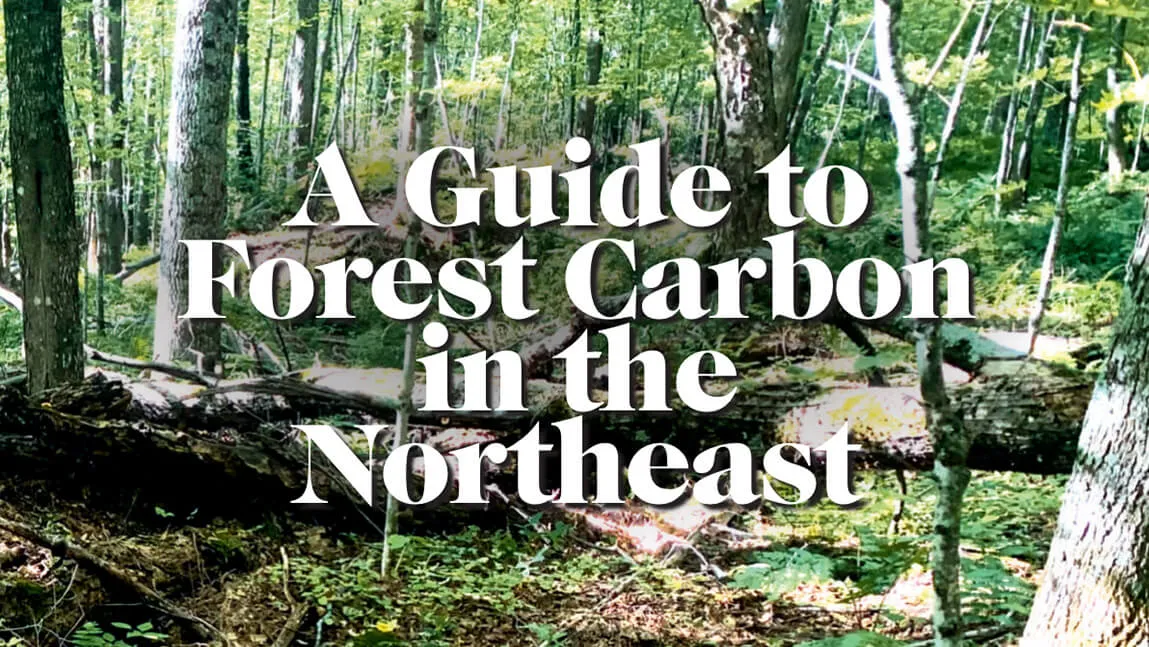Burlington—Forests play a vital role in mitigating global climate change. As “natural climate solutions,” they capture carbon from carbon dioxide in the atmosphere and store it in wood and soil.
To help forest landowners and managers make informed land-use and forest management decisions for carbon benefits, Dr. Ali Kosiba recently released A Guide for Forest Carbon in the Northeast. Kosiba is a licensed Vermont forester and the University of Vermont (UVM) Extension forester.
The illustrated guide is a compilation of her articles on forest carbon dynamics that originally ran as a series in Northern Woodlands Magazine. It can be viewed online at https://go.uvm.edu/forest-carbon. Print copies are available to pick up at no cost at UVM Extension offices (Check https://go.uvm.edu/offices for locations) and state forestry offices in New England and New York.
Individual copies also are available by mail through Northern Woodlands for $7 with discounts available for bulk orders. To order a copy, go to https://go.uvm.edu/buyguide.
In “The Introduction to Forest Carbon,” Kosiba describes key processes and terminology to explain the concepts of carbon sequestration--the process of capturing and storing atmospheric carbon dioxide in woody biomass--and how carbon moves through forest systems.
“Understanding Forest Soil Carbon” provides an overview of the role of forest soils in carbon storage, including factors affecting how much carbon forest soils can store. It also describes management techniques to protect soil as part of managing forests for climate change mitigation goals.
Forest landowners can learn about different approaches that may promote carbon sequestration and storage in “Managing Forests for Carbon.” The article also discusses how management decisions relate to the bigger goals of climate resilience and meeting resource needs.
“Payments for Forest Carbon” provides guidance on new opportunities for landowners to receive compensation for making climate-friendly management choices through use of conservation easements, carbon offsets and practice-based programs. The guide also includes resources for landowners who are considering integrating carbon goals into their forest management plans and conservation-based estate planning.
Kosiba prepared the guide in collaboration with the Securing Northeast Forest Carbon Program, which was funded by the U. S. Department of Agriculture Forest Service Landscape Scale Restoration Program. Her work also was partially funded by the Virginia Wellington Cabot Foundation.
